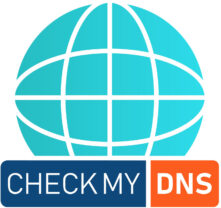In digital speak, DNS vs IP address are always the leading topics in discussion on how websites and other resources on the web work. These two concepts are related, yet they have two different ways of making the Internet accessible and easy to understand. This will help you understand how websites are located and connected across the internet, and why both are essential to a functioning online experience.
What is an IP Address?
An IP address is a unique series of numbers assigned to every device connected to the internet. In the same way that houses have street addresses for their physical locations, every online device has an IP address to identify its location on the network. The use of IP addresses helps devices find and communicate with each other on the internet, which is why you can connect to websites, send emails, and access all sorts of online services.
There are two kinds of IP addresses primarily classified as follows:
- IPv4: This is the widely used type. It uses four numbers separated by dots. An example IPv4 address is 192.168.0.1. IPv4 has enough space to provide only approximately 4.3 billion unique addresses, whereas explosive growth in the Internet is creating demand beyond its supply.
- IPV6: IPV6 is made just to upgrade. As for an address of this magnitude, it will require using eight hexadecimal values that incorporate colons in between: 2001:0db8:85a3:0000:0000:8a2e:0370:7334. As if it were one trillion there, it might be utilized much more when features emerge.
What is DNS?
In other words, this translation is crucial since it lets users access websites by placing familiar names, rather than having to remember numeric IP addresses.
This process happens through a series of DNS servers, each helping to resolve the domain name till the IP address is finally found. Not only has DNS made web browsing easy for users, but it also ensures that connections reach the right servers.
DNS records, maintained in DNS servers, are not restricted to the IP addresses; they consist of other data types too, including the following ones:
A and AAAA Records: Converts domain names into IPv4 or IPv6 addresses.
MX Records: Redirects email to particular mail servers.
CNAME Records: Acts as an alias of one domain toward another.
TXT Records: Contains text information, for example, verification data.
DNS vs IP Address: Key Differences
Functionality:
IP address is the numerical address given to each device’s location on the internet.
The DNS service maps domain names with IP addresses, making it more human-friendly to access the internet.
Usability:
IP addresses are extremely difficult for humans to memorize and work with; IPv6 in particular, every address is unique as a sequence of numbers, often very impractical to work directly with.
DNS makes access much easier by enabling users to only type in friendly domain names, but then it internally maps those domain names into IP addresses.
Flexibility:
An IP address uniquely identifies a specific device or server, so it is a fixed identifier.
Another good thing about DNS is the flexibility in changing the location of servers without disturbing the experience of the users. Suppose a website changes its server; its IP address will change, but users may still access it using the domain name because its DNS records update the IP address.
Scalability:
IP addresses are limited in number, especially with IPv4. The transition to IPv6 alleviates this problem by offering more addresses, but it does not inherently make it easier for users to access websites.
DNS, on the other hand, is highly scalable and flexible. It allows users to access any website using a simple domain name, regardless of changes in underlying IP addresses or server configurations.
How DNS and IP Addresses Work Together
DNS and IP work together to make the Internet more user-friendly. To simplify, this is basically what happens when you use your browser to enter the address of any website:
- DNS Query: The request is sent out from your browser as a DNS query to find out which domain name has a specific set of IP addresses.
- DNS Resolution: A series of DNS servers receives the request, checks its records or cache, and then the correct IP address is relayed back to your browser.
The location of the IP address is then sent back to the browser, which then connects to the server where the website is located.
The browser is then shown the website after successfully connecting to the correct server.
Without DNS, users would have to remember complex IP addresses for every website. Without IP addresses, computers wouldn’t know where to find these sites. Together, DNS and IP addresses make it easy and painless to access the internet.
DNS vs IP address are two of the most fundamental building blocks of internet functionality. They work together too quickly and efficiently connect users to websites. IP addresses uniquely identify devices, while DNS makes navigation accessible by converting domain names into those numeric addresses. This balance between technical precision and user accessibility powers the modern internet, allowing anyone, anywhere to browse, communicate, and access information with ease.
